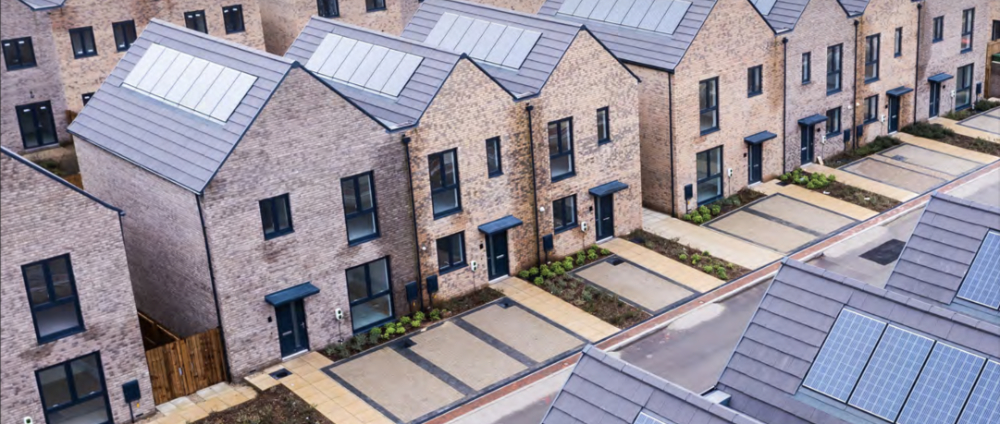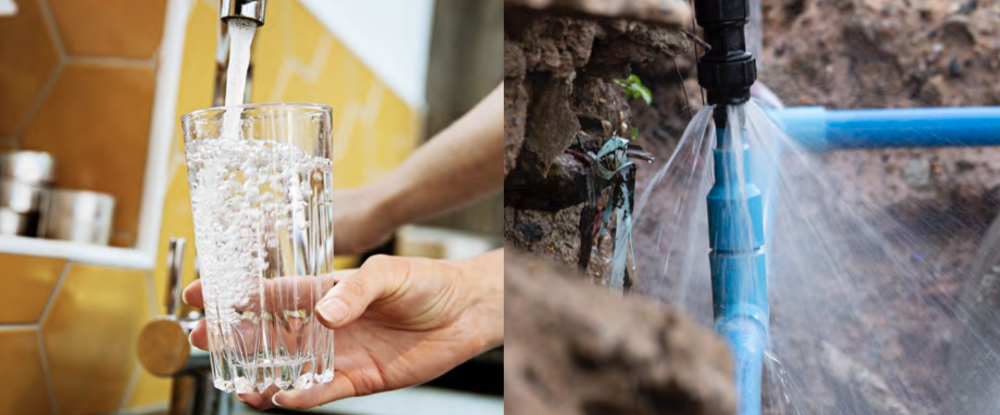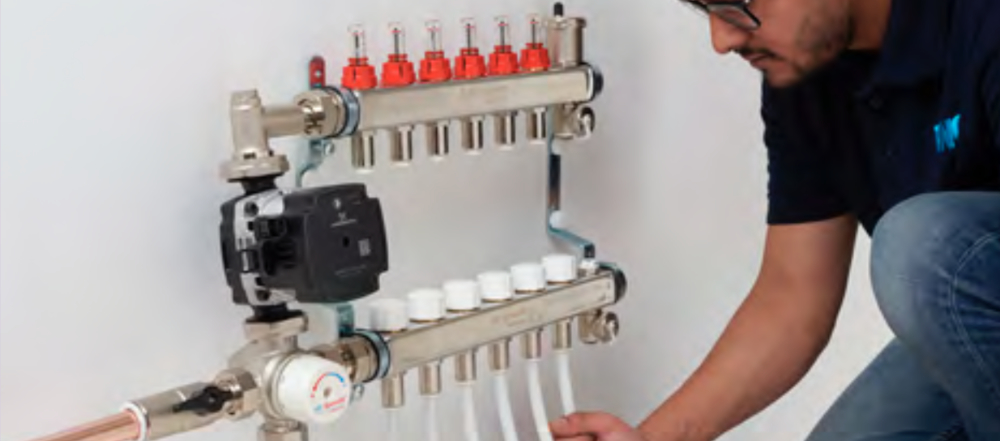Specification challenges of future proofing homes fit for purpose
Contents |
[edit] Building fast and building to last
The population of the UK is growing and, as it does, the demand for housing increases with it. Official estimates from the government’s manifesto outline the need for around 300,000 new homes every year over the next decade, while a large proportion of existing homes also require upgrading to make them suitable for modern living. For specifiers, fulfilling this huge demand for new homes and home improvements is just one part of the puzzle, as buildings need to be designed for the future too.
When designing homes and buildings that can perform well for decades to come, the specification of systems is of paramount importance. Whether it is a new build property, conversion of an existing building, or even a home improvement project, specifiers must consider the long-term capabilities of materials and solutions to ensure reliable long-term performance, alongside safety and sustainability.
[edit] Reducing pressure with PRVs
To safeguard a plumbing system for years to come, it’s essential you manage the water pressure from the mains supply. Whilst low water pressure can cause frustrations for end users, high water pressure can be far more dangerous, both for end users and the health and longevity of the overall system.
Pressure Reducing Valves (PRVs) are an essential device for specifiers when negating the harmful impacts of high water pressure. As UK water pressure can vary between one and fifteen bar, PRVs work to reduce high inlet pressure to a safe and consistent level. This helps heating systems and individual valves and appliances operate more safely and efficiently.
To specify PRVs successfully, sizing is critical to achieving a suitable flow rate and reliable pressure control. Undersized and oversized PRVs can have adverse effects on the overall system, including unwanted noise and accelerated damage. For optimum performance, you should size the PRV in accordance with the anticipated demand and volume of outlets required. For domestic buildings that require PRVs, compact options deliver the same level of protection, without taking up lots of valuable space; space being a key consideration in modern homes with a smaller footprint.
[edit] Improving safety with backflow prevention valves
Besides maintaining safe water pressures within properties, you should also specify systems to keep the supply itself safe. Backflow prevention valves are designed to protect systems from contamination, preventing unsanitary water from flowing back into the network.
For successful specification, it is critical to know the fluid category of the downstream equipment that is connected to the plumbing system. This identifies the level of contamination risk that needs to be prevented. With five categories outlining the different requirements for backflow prevention, specifiers can easily understand the level of protection required from project to project.
Domestic new build buildings are going to be somewhere between a category one and category three level risk and so will require zero to intermediate levels of backflow prevention. Buildings deemed Fluid Category 1 require zero backflow protection, Fluid Category 2 requires single check valves, and Fluid Category 3 requires double check valves.
Considering that it is just as simple to fit a double check valve as it is a single one, we recommend the use of a double check valve in preventing backflow in domestic situations.
[edit] Specifying sustainability
Sustainability is a significant factor in creating futureproof homes. The housing stock is already one of the largest contributors to greenhouse gas emissions in the UK, with around a fifth of housing-related emission coming from heating water in the home. As targets toward net-zero tighten, domestic plumbing systems will play a critical role in creating buildings that are fit for a sustainable future.
Where water is concerned, leaks are a common problem that can be minimised with the use of high- quality pipes, valves and fittings. While leaks are more common in the national infrastructure where over 3,000 million litres are lost to leakage every day, leaks regularly occur within domestic hot and cold water feeds, standing in the way of efficiency efforts. With these leaks more likely to occur at connection points, reducing the number of connections across a system can help to protect homes from leaks, making systems more efficient. This can be achieved by using more flexible pipe solutions, which can bend around corners and through joists to cut down on connections and in turn the potential for leaks (see last section).
Ensuring that buildings are designed to last, particularly from a plumbing perspective, should be a key priority for specifiers. By building sustainability and performance into every system – from leak-proof plumbing through to future-proof heating – buildings can perform better and contribute to overarching efforts to reduce emissions, all while improving comfort for occupants.
[edit] How plastic can future-proof plumbing in modern homes
As efforts to enhance sustainability gain momentum, plumbing and heating systems are increasingly in the spotlight. This article explores the role of plastic in driving performance and future-proofing modern homes.
Demand and sustainability are two factors transforming the landscape of the UK housing sector, creating improvements in speed and quality and driving forward efficiency. Plumbing is typically a leading factor in sustainability, contributing to 17 percent of a typical home’s emissions.
To keep up with the growing demand for housing, more than 130,000 new homes were built in 2023. Insights from the Home Builders Federation also suggest that these properties are making significant strides towards sustainability targets, with 85 percent of new builds, emitting 61 percent less carbon per year and making energy bills up to 55 percent cheaper than the average older home.
These figures are hugely encouraging. For plumbing and heating specifiers and contractors, understanding the solutions that contribute to these figures is key to achieving improvements, particularly as the Future Homes Standard comes into force in 2025.
[edit] Unlocking potential with plastic
Creating new homes presents an opportunity to build efficiency, quality and reliability into every aspect of the build. A major shift in how modern homes are heated– away from traditional radiator systems and towards underfloor heating – is just one example of this. The recent changes to Part L Building Regulations mean that the flow temperature of heating systems should not exceed 55 degrees Celsius. This not only makes a significant impact on sustainability but also extends the longevity of systems, as it allows them to work within optimum conditions. Underfloor heating is ideal here, operating effectively within these lower temperatures and facilitating sustainable operation.
Material choice is critical at the point of specification, and plastic is a potential front-runner for several reasons. As well as supporting the efficient performance of plumbing and heating systems, plastic components can deliver reliability over the long term, contributing to sustainability credentials while performing consistently.
Unlike traditional materials, plastic pipes and fittings streamline the installation process. Innovations like plastic push-fit technology remove the complexity from installation, leading to faster and easier installations that boast consistent levels of quality, reliability and performance.
[edit] Advancing performance and efficiency
We know plastic is perfectly suited to hot and cold plumbing and heating systems and that it can be used on most applications, but how exactly can it support sustainability?
Primarily, plastic pipes and fittings underpin efficient system performance. Leaks, for example, present a common problem in plumbing systems, but can be minimised with plastic solutions. Connections are the main cause of leaks, so by strengthening individual connections and their overall volume within a system, the potential for leaks can be decreased. Plastic makes this possible, both with push-fit technology, delivering consistently strong connections, and through using polybutylene pipe to create long pipe runs, minimising the number of connections required.
Solutions including plastic manifolds make it possible to easily centralise and distribute water feeds to maximise efficiency. Establishing a centralised pipework junction allows systems to optimise consumption and further minimise the potential for leaks.
Water control valves are also essential, both to everyday operational efficiency, safety and to support future maintenance. Installing Thermostatic Mixing Valves to bath outlets is critical in new build properties, so the user can blend hot and cold water and ensure safety at the point of use. Compact and easy-to-install options can also bring added value to new build homes. Where maintenance is concerned, the specification of service valves can also facilitate the swift isolation of water to appliances and fixtures, optimising efficiency and making future maintenance works more straightforward.
[edit] Conclusion
Specifying plastic solutions for new build homes can unlock the potential to create future-proof plumbing and heating systems. Whether it is fittings, valves, manifolds or pipes, plastic push-fit technology strengthens every connection and makes the installation of plumbing and heating systems quick and easy.
This article appears in the AT Journal issue 150, summer 2024 as 'Fit for purpose: specification challenges to keep in mind when designing future-proof homes and buildings', written by Eric Winter, Director of Product Development at RWC. The last four sections appear in the same journal as 'How plastic can future-proof plumbing in modern homes', written by Richard Bateman, Product Marketing Manager at RWC.
--CIAT
Featured articles and news
Amendment to the GB Energy Bill welcomed by ECA
Move prevents nationally-owned energy company from investing in solar panels produced by modern slavery.
Gregor Harvie argues that AI is state-sanctioned theft of IP.
Heat pumps, vehicle chargers and heating appliances must be sold with smart functionality.
Experimental AI housing target help for councils
Experimental AI could help councils meet housing targets by digitising records.
New-style degrees set for reformed ARB accreditation
Following the ARB Tomorrow's Architects competency outcomes for Architects.
BSRIA Occupant Wellbeing survey BOW
Occupant satisfaction and wellbeing tool inc. physical environment, indoor facilities, functionality and accessibility.
Preserving, waterproofing and decorating buildings.
Many resources for visitors aswell as new features for members.
Using technology to empower communities
The Community data platform; capturing the DNA of a place and fostering participation, for better design.
Heat pump and wind turbine sound calculations for PDRs
MCS publish updated sound calculation standards for permitted development installations.
Homes England creates largest housing-led site in the North
Successful, 34 hectare land acquisition with the residential allocation now completed.
Scottish apprenticeship training proposals
General support although better accountability and transparency is sought.
The history of building regulations
A story of belated action in response to crisis.
Moisture, fire safety and emerging trends in living walls
How wet is your wall?
Current policy explained and newly published consultation by the UK and Welsh Governments.
British architecture 1919–39. Book review.
Conservation of listed prefabs in Moseley.
Energy industry calls for urgent reform.




























